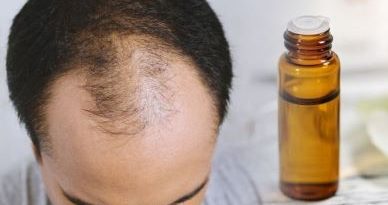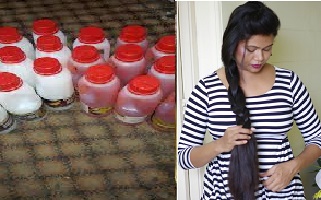Is It Possible to Make Essential Oils at Home?
So, can you teach yourself how to make essential oils at home? The short answer is yes, you can make your own essential oils, and I’ll go over that in more detail later.
First, I’d like to give you a quick description of essential oils, as there is a lot of misunderstanding about them.
Table of Contents
Essential Oils | Rose Oil Infusion
Essential oil is a distilled oil that is thought to contain a plant’s essence or fragrance. Aromatherapy has reignited people’s interest in these wonderfully fragrant, calming oils as a way to encourage calmer or more optimistic moods based on scent.

Although essential oils have long been used in perfumes, cosmetics, and incense, aromatherapy has reignited people’s interest in these wonderfully fragrant, soothing oils as a way to promote calmer or more positive moods based on smell.
Please Read: 10 Best Hair Growth Oils of 2020 for Hair Health and Thickness
Aromatherapy makes use of the medicinal properties of aromatic compounds present in plant extracts. Other plants’ scents can increase a person’s sense of calm, whereas others may even have a mind-lifting effect.
My essential oil usage map illustrates what you need to know about the most common oils and where you can get them.
Is It Also Possible To Create Essential Oils?
However, you’ll find that making your own DIY essential oil will save you money and ensure that you get the aromas you want… Be prepared to spend a significant amount of money upfront!
Meanwhile making your own pure essential oils at home requires a distillation procedure, which necessitates the purchase or construction of your own still!
Distillation is another relatively new process for producing essential oils.
As a beginner, we suggest starting with a more conventional and alternative oil infusion method.
While not as powerful as a distilled essential oil, an oil infusion can offer you really good fragrant results, and you won’t need to dilute it because you can adjust the strength to suit your needs.
Choosing the right materials is crucial to make successful oil infusions. You’ll need a light-colored oil with a mild fragrance that won’t overshadow the flowers, herbs, or spices you’ll be using.
Olive oil, jojoba oil, safflower oil, almond oil, and canola oil are all good options.
Herbs to Use in an Oil Infusion
When making your own essential oil, you can use almost any garden herb. Leaves and flowers should be used, but woody stems and branches should be avoided.
Before adding the leaves to the oil, chop them to release their fragrance. Lavender, rosemary, peppermint, thyme, and lemon balm are the most common.
Spice Selection:
The most aromatic spices in essential oils are probably the most popular. Cinnamon, coriander, cumin, nutmeg, and cloves appear to be the most common.
Before using a mortar and pestle to apply the spices to your oils, crush them to completely unleash their aromas.
Choosing Flowers:
Scented flowers are a common addition to many essential oils produced at home. You may make your own oils with a single flower or a mixture of flowers. Make sure you just use the petals, as they contain the majority of the fragrance.
Remove the petals from the flowers when they are still open so you can use them in your oils. Roses, carnations, frangipani, hyacinth, lavender, violets, marigolds, and a variety of other fragrant flowers are suitable for use in essential oils.
Rose Oil Infusion Recipe (Basic)
Rose petals may be used to produce your own infusions.
- If you want a good infusion, choose buds that are only partially open. Just ¼ cup of petals should be needed.
- Fill a plastic zip-lock bag halfway with petals and seal it. Tap the petals softly with a wooden mallet.
- To release the oil and fragrance, simply bruise the flowers a little.
- Pour ½ cup of your preferred base oil over the bruised flower petals in a glass container.
- To make the oil from the flowers mix with your base oil, seal the container and shake it well. Set the jar aside for the night.
- Strain the oil and discard the petals after the flowers have been steeped in it for 24 hours.
- Repeat the process for another 1/4 cup of bruised petals, steeping them in the oil overnight.
- After the second batch of petals has been discarded, smell your homemade essential oil.
- Repeat the process a third time if you prefer a stronger-smelling oil.
- Strain the oil into a dark glass jar until the scent has reached a high enough level for you.
- Keep it tightly sealed and out of direct sunlight before you need it.
Aromatherapy Oil Infusion for Massage
Some aromatherapy oils work well as a sensual massage oil to help relax the body and mind.
- You’ll need about ¼ cup of mixed jasmine flowers, lavender herb, and grated vanilla beans for this infusion.
- In a ziplock container, combine ¼ cup jasmine flowers, lavender flowers, and grated vanilla bean.
- To release the fragrances, gently pound the flowers with a wooden mallet.
- Place the flowers in a glass jar and cover them with 1 cup extra virgin olive oil. Close the jar and give it a good shake.
- Allow the flowers to steep in the oil for 48 hours.
- Strain the oil after 48 hours and remove the flowers.
- Place the oil in a dark glass jar and keep it cool and dark until you need it.
The scent should be very mild at first, but it will become more pronounced as the oil is slightly heated by the natural warmth of your skin during a sensual massage.
We hope you found this article on making essential oils and infusions useful. We’d love to hear from you if you’ve tried making your own essential oils or infusions at home, or if you have any other homemade essential oil recipes to share.

